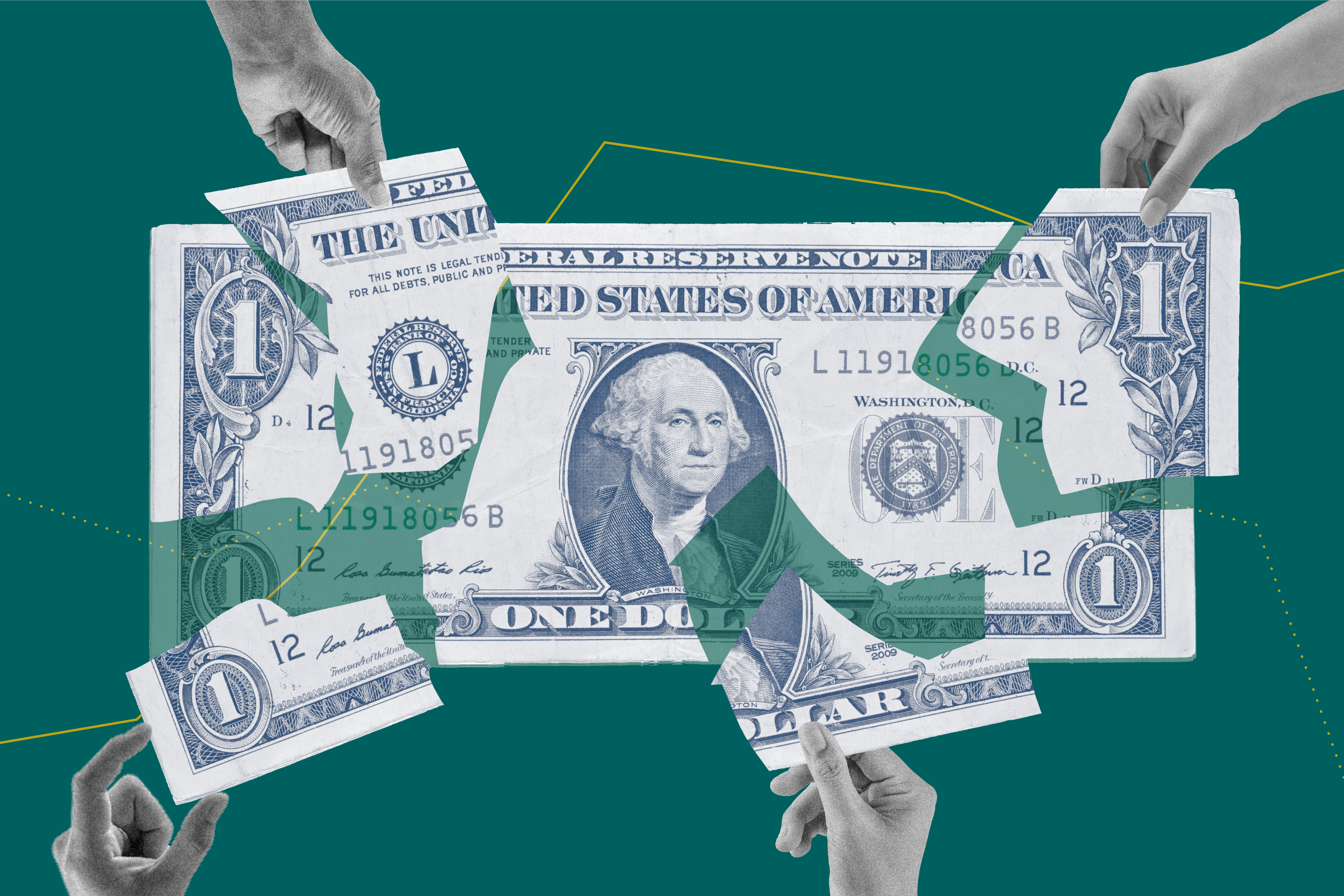It’s no secret that rent prices ripped higher between 2020 and 2022. Rents on the West Coast were $1,992 in January 2020 at the beginning of the COVID-19 pandemic and peaked out at $2,497 in August 2022, growing 25% in just 30 months. Asking rents grew by a modest 2.5% in February 2020 and then exploded to a peak growth rate of 19% in January 2022. HUD Fair Market Rates for the biggest 15 county metros in Washington State jumped 23% from 2020 to 2023. Why did rents take off like this? Was it because landlords just got greedy at the same time and started jacking up rents simply because they could?
That’s not how the market works. Landlords can’t just raise the price of a rental more than what someone is willing to pay for it. If the price is so high that no one will rent the unit, it will sit empty and the homeowner’s pocketbook would feel the burn from the property tax and the mortgage payments. Rental housing operators need residents who pay rent regularly and predictably, which means that the resident needs to be able to afford the rent. That’s why housing providers screen potential renters based on their income. However, landlords also need to charge for rent based on their costs, just like any other service. So what’s really going on here? Why did rents explode higher during the pandemic?

Consumer Prices
First of all, it’s important to take a look at the overall economy during that time, especially at prices. Consumer prices in the Seattle-Tacoma-Bellevue metro area rose over 19% from 2020 to 2023. Inflation started to run red-hot in 2022, when it clocked in at over 8% year-over-year. Prices on everything from groceries and gasoline, to property tax and insurance jumped significantly. Home prices in Washington State exploded from $423,100 in January 2020 to a peak of $664,200 in May 2022, a growth of 57% in just under 30 months.
The New York Stock Exchange (NYSE) opened at 13,913.03 in January 2020 and touched a high of 17,442.54 in January 2022, a growth of 25% in 2 years. However, the NYSE reached a low of 8,664.94 in March 2020, which means that the NYSE grew 101% in the 22 months between March 2020 and January 2022. Part of the reason for this incredible growth can be tied to $3,400 in direct stimulus payments to tens of millions of Americans and the PPP loans that the federal government offered to businesses during the pandemic. Adding new money into the economy often causes bouts of inflation, when prices rise for regular goods and services.
Interest Rates
When inflation starts to burn hot, the Federal Reserve (America’s central bank) must raise the “Fed Funds Rate,” which is basically the cost for banks to borrow money from the central bank. Interest rates are also used to determine mortgage rates, which is the biggest cost to rental operators. Interest rates jumped around during the pandemic, starting at 1.55% in January 2020, dropping down to near 0% in May 2020 and staying there until February 2022, then jumping to 5.33% in January 2024 and reaching a 23-year high. Low interest rates drove huge demand in housing during the pandemic, sending prices stratospheric.
MORATORIUM
In response to the COVID-19 pandemic, Washington State Governor Jay Inslee announced a State of Emergency on February 29, 2020. Inslee released another proclamation on March 18, 2020 extending and augmenting his Emergency Order with a series of moratoriums on rental housing. The Emergency Order included a moratorium on evictions and a moratorium on raising the rent. The final extension of the moratorium ended on October 31, 2021. During this time, property owners were not exempted from paying their mortgage or property taxes, which continued to be collected under the full force of the law.
Mortgage Payments
The single biggest cost to owners and operators of rental housing is the monthly mortgage payment. No matter if a unit is occupied, vacant, or delinquent in rent, the mortgage must be paid or the bank can repossess the property. The median monthly mortgage payment in America shot up from $1,242 in 2019 to $2,268 in 2023, a growth of 83% over 4 years. Washington has the 5th most expensive median mortgage payment in the nation, which came in at $2,878 in 2023. For rental operators that own less than 10 units, missing a mortgage payment meant destroying their credit, potentially even forcing them into a firesale, and pulling them into an abyss of financial problems.
PROPERTY TAX
Another major expense that must be paid every year is the property tax. The average property tax rate in Washington State is 0.84% and the average annual property tax payment is $4,061. Property taxes in Washington State increased 24% from 2019 to 2022. In that same time period, property taxes increased by over 30% in Pierce County. If a homeowner can’t make the property tax payment, the government will place a lien on the property. If the homeowner isn’t able to get caught up, the property can be sold off in a tax sale.
INSURANCE
Property insurance rates for residential units in Washington State rose from an original premium of $746 per year in 2022 to a renewal premium of $1,063 in 2023, an increase of 42%. Another source reports that insurance premiums increased from $1,175 in 2019 to about $1,700 in 2023, an increase of 45%. If a property owner doesn’t maintain current insurance coverage, their lender can send the mortgage into default.
MAINTENANCE
For property management companies who have to hire employees, average US wages grew from $28.43 per hour in January 2020 to $33.02 in 2023, a rise of 16%. The cost to replace major appliances rose 24% from 2020 to 2023. Construction materials used to repair and maintain rental units rose 28% from 2020 to 2023. The cost of real estate services, including property management, legal services, and other services rose 14% from 2020 to 2023. A statewide shortage in skilled trade workers also contributed to a rise in maintenance costs for rental properties during the pandemic.
Utilities
No modern home is considered livable until the home is connected to utilities like electricity, water, heat, and waste disposal. Rates for natural gas and electricity tend to fluctuate and are highly seasonal in nature, but have still posted significant increases in the period during the pandemic. The price of natural gas rose by an average of 48% from 2020 to 2023. Electricity prices rose by 13.51% from 2020 to 2023 while sewer rates for multifamily and residential properties rose by about 14% in the same period. Only waste disposal rates posted an increase below the rate of inflation, rising by just 2.3% from 2020 to 2023.
conclusion
Just like any other service, the price of housing rises when the costs of housing rise. When inflation heats up, federal interest rates rise, and costs go through the roof, rents must also rise in parallel. Rent prices are also tied to the supply and demand of the product or service. The effect of having a moratorium on rent increases during a period of rapid cost growth meant that, once the moratorium was lifted, the rent increases that came reflected new, dramatically higher prices instead of a slower and more incremental movement in line with overall inflation.
If there are tons of houses on the market and not too many people looking, prices will fall. If there are too many buyers or renters chasing after too small a supply, prices will rise. If we want to keep rent prices from shooting out of control, we need to focus on understanding the costs that underpin rent. It’s important to note that rent prices in Washington State are coming down from the highs set during the pandemic. Washington State rent prices have fallen from $2,195 in January 2023 to $1,975 in January 2024, a decrease of more than 10%. When market forces are allowed to function normally and more supply starts to come online, prices will further stabilize and find an equilibrium.
“Rent Price/Costs Data” (our public data set for this article)

